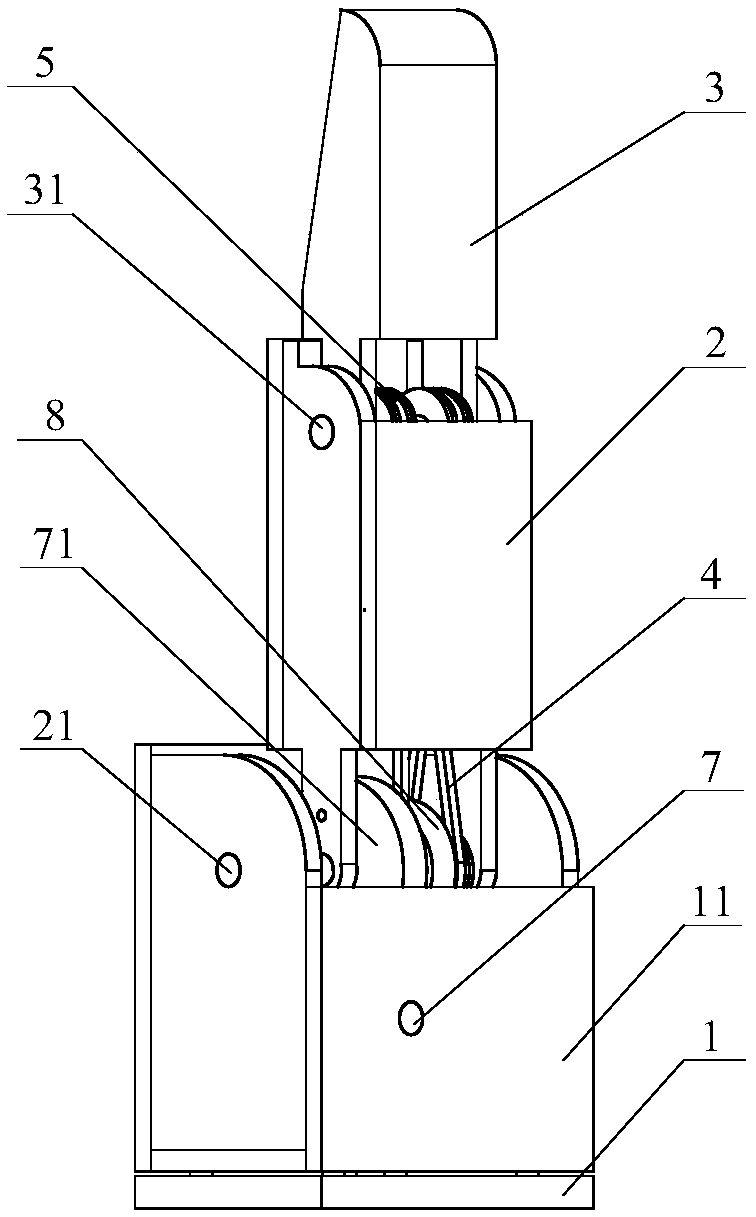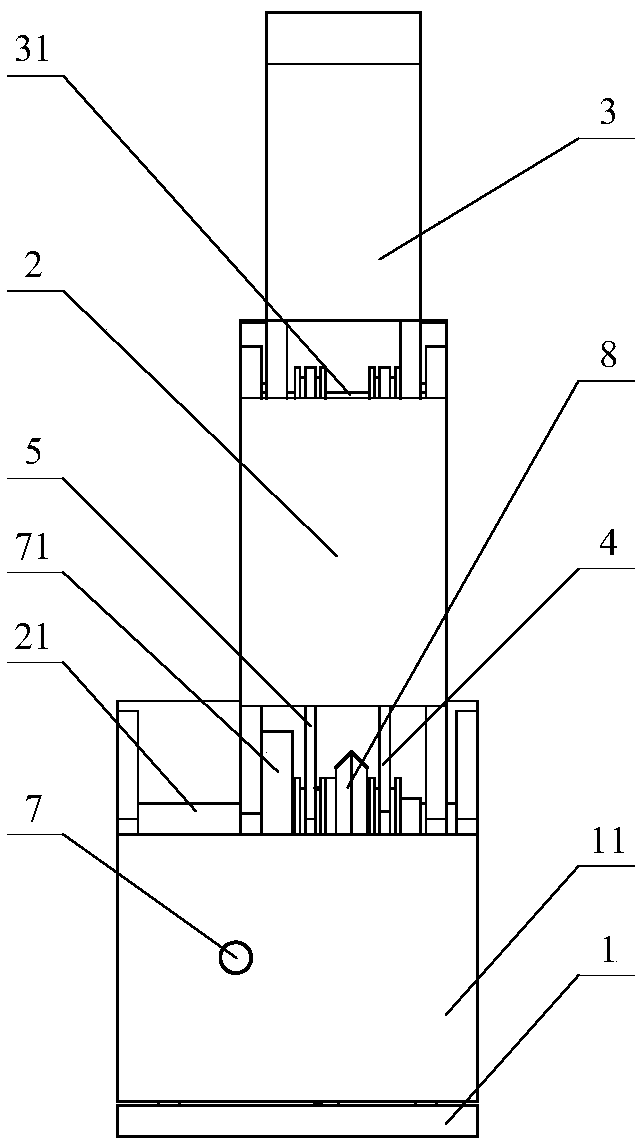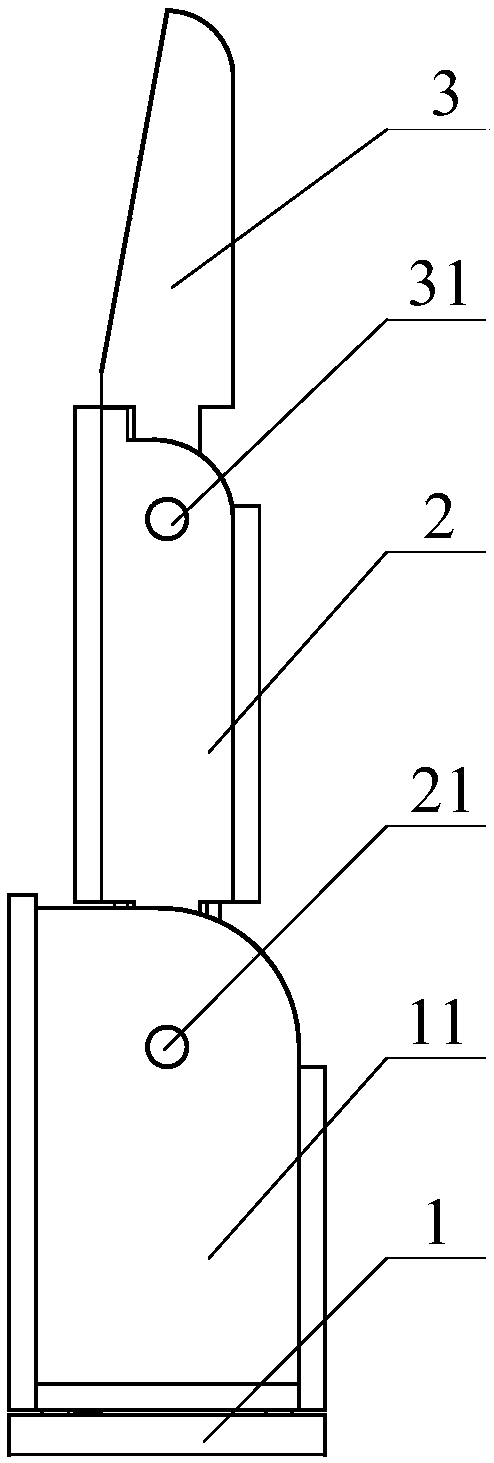Coupling self-adaptive robot finger device characterized in that tail end moves along straight line
A robot finger and linear motion technology, applied in the direction of manipulators, chucks, manufacturing tools, etc., can solve the problems of increasing robot control difficulty and programming requirements, increasing control complexity, and inability to couple and balance, so as to reduce control difficulty and structure Compactness, the effect of improving work efficiency
- Summary
- Abstract
- Description
- Claims
- Application Information
AI Technical Summary
Problems solved by technology
Method used
Image
Examples
Embodiment Construction
[0039] The specific structure and working principle of the present invention will be further described in detail below in conjunction with the accompanying drawings and embodiments.
[0040] An embodiment of the coupled adaptive robot finger device with the end of the present invention designed to move along a straight line, such as Figure 1-5 As shown, a coupling adaptive robotic finger device whose end moves along a straight line includes a base 11, a first finger segment 2, a proximal joint shaft 21, a second finger segment 3, a distal joint shaft 31, a first transmission mechanism 4, The second transmission mechanism 5, the third transmission mechanism 8 and the motor 12; the motor 12 is fixed in the base 11; the proximal joint shaft 21 is movably sleeved in the base 11; the first finger section 2 is movable Socketed on the proximal joint shaft 21; the distal joint shaft 31 is movably sleeved in the first finger segment 2, and the center line of the distal joint shaft 31 ...
PUM
 Login to View More
Login to View More Abstract
Description
Claims
Application Information
 Login to View More
Login to View More - R&D
- Intellectual Property
- Life Sciences
- Materials
- Tech Scout
- Unparalleled Data Quality
- Higher Quality Content
- 60% Fewer Hallucinations
Browse by: Latest US Patents, China's latest patents, Technical Efficacy Thesaurus, Application Domain, Technology Topic, Popular Technical Reports.
© 2025 PatSnap. All rights reserved.Legal|Privacy policy|Modern Slavery Act Transparency Statement|Sitemap|About US| Contact US: help@patsnap.com



